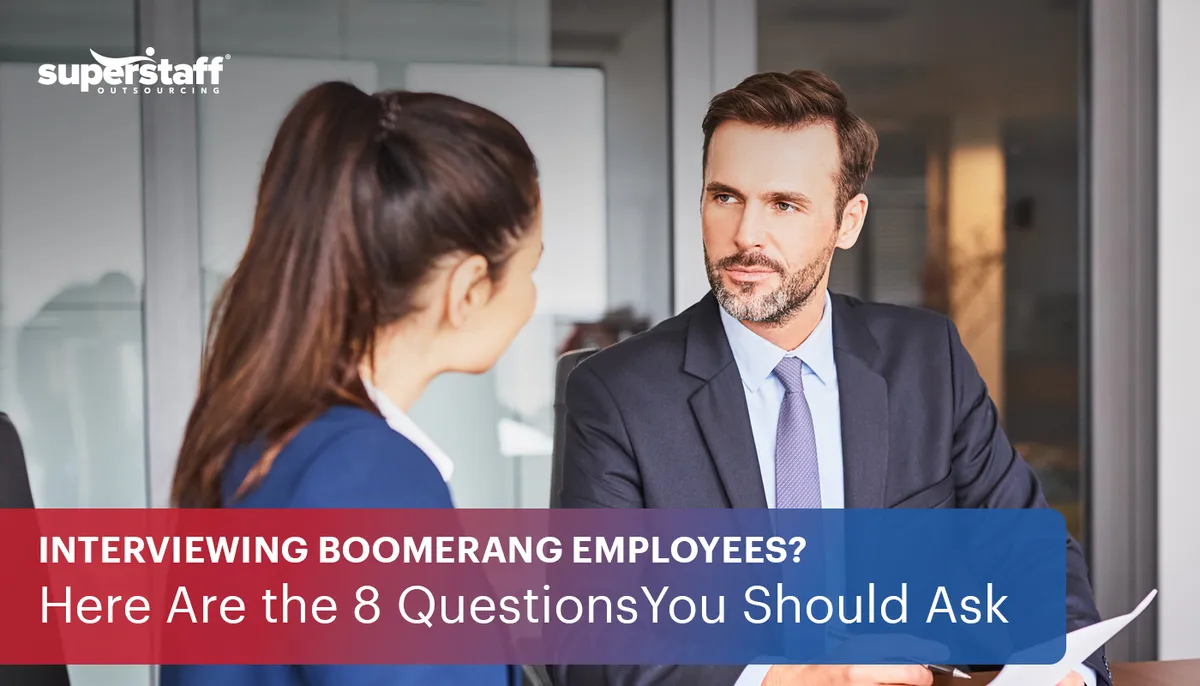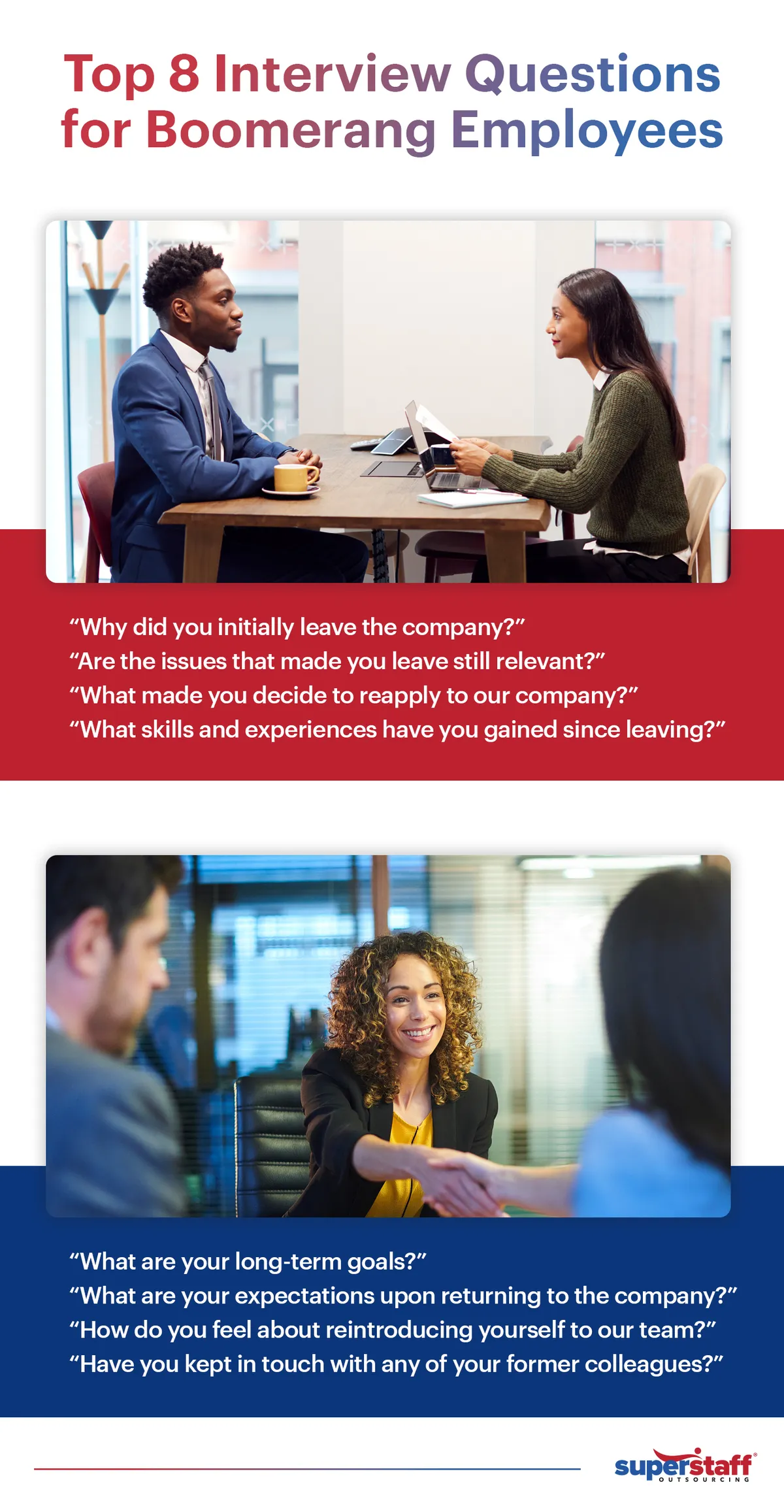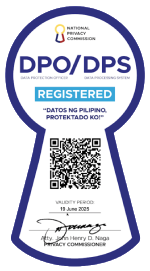
In early 2021, following the slowdown of the global pandemic, millions of workers worldwide quit their jobs, leading to a phenomenon known as “The Great Resignation.”
For many of these employees, the COVID-19 crisis prompted them to reevaluate their careers. They felt compelled to seek greener pastures, whether that meant higher pay, better work-life balance, faster professional development, or a combination of all three.
In 2024, “The Great Resignation” has transformed into “The Great Regret,” with more workers regretting their decision to leave their previous employers and wanting to return to their former roles. These workers are now dubbed the “boomerang employees.”
What Are Boomerang Employees?
Like a metaphorical boomerang that gets thrown in the air but returns to its starting point, a “boomerang employee” leaves a company at one point but returns after some time.
Boomerang employees were seen as disloyal and flaky in the past. As widespread labor shortages and hiring challenges continue in 2024, many employers are open to welcoming back these “boomerang employees.”
The primary advantage of welcoming back a former employee is that they are already familiar with the company, including its culture, workload expectations, and policies, making it easier to foresee how well they blend in and perform their duties.
Due to this predictability, some business leaders may feel tempted to rehire an employee without undergoing a formal hiring process. However, interviewing boomerang employees is still beneficial because it allows you to understand why they left, why they want to return, what they learned while away, and whether your goals and expectations are still aligned.
Looking to Rehire a Former Worker? Here Are 8 Must-Ask Interview Questions for Boomerang Employees
According to the U.S. Bureau of Labor Statistics, 216,000 new jobs opened in December of 2023, signaling much higher-than-anticipated job and wage growth in the new year. Although the 2024 labor market may be slowing down compared to the highs of “The Great Resignation,” employees still have a wealth of choices.
Even with the numerous job opportunities, many workers today seek a second chance at happiness with their previous employer.
Your former employee may want to return, but is hiring them the right choice for your team? Before making that final decision, here are some questions to ask during the interview process:
“Why did you initially leave the company?”
During an interview with a boomerang employee, a hiring manager can use the same questions they would want to ask a new hire but with some extra considerations. The goal is to understand their mindset, motivations, and how you can work together to make their transition back into the company as quick and seamless as possible.
When considering rehiring a former employee, one of the first questions should be why they initially left the company.
It’s possible that the employee left because of health reasons or certain family obligations. Perhaps they craved professional development or were lured away by higher pay and compensation.
Recent research found that employees’ top reasons for leaving a job are better total benefits, including perks such as flexible work (39%), health insurance (33%), and retirement packages (44%). Beyond merely wanting a higher paycheck, most employees also want a company culture that prioritizes overall well-being.
Asking about your former employee’s reasons for leaving is essential to determining whether or not they will be a good fit to return to your team. At the same time, you can get detailed information and feedback about current employees’ feelings about your pay, benefits, and company culture.
“Are the issues that made you leave still relevant?”
If your former employee left because of perceived problems in the workplace, tackling these issues head-on during the interview stage is necessary to prevent future issues.
For example, a boomerang worker may have once felt unfit for their role but have since had the chance to hone their skills at a different company. Perhaps they had frustrations about specific policies that have now been changed.
Another problem may be conflict with former managers or co-workers. If these colleagues are still in the company, addressing this issue must be a top priority for the hiring manager.
The goal is to assess whether the boomerang employee may have unresolved issues that can affect their performance and overall satisfaction. Address each problem individually before deciding whether or not to bring them back into your team.
“What made you decide to reapply to our company?”
This question may seem unnecessary and obvious for decision-makers thrilled about a former employee’s return. However, it’s critical to understand your boomerang employee’s mindset and motivation for returning. Despite having previously worked for your company, their answer may not be what you think.
According to a UKG study, boomerang employees returned to their previous employers because they missed the following:
- Former peers and co-workers (38%)
- Familiarity and comfort in the role (31%)
- Customers (22%)
- Pay and compensation (19%)
- Work-life balance (16%)
Additionally, understanding their reasons for returning can help you set their expectations. For example, what if particular team dynamics or policies have changed? Would they still want to come back? A clear, honest conversation can help both parties make informed decisions and prevent misaligned expectations.
“What skills and experiences have you gained since leaving?”
One of the main benefits of hiring a former worker is that they’ve most likely learned new skills and knowledge that could benefit your business. Employees who leave one job for another always gain experiences that add to their professional development and value.
As such, it’s a good idea to ask them to walk you through their resume and what they’ve been up to after being away from your company. Perhaps they’ve worked in an entirely different industry and want to connect you with clients from that sector. Maybe they have ideas about how to improve specific processes in your operations.
Beyond seeing how a boomerang employee can add value to your business, this question can also open a conversation about your company’s available career development opportunities. Learning about your worker’s experience can highlight potential weak points in your training and upskilling programs, and enhancing these can help you improve employee retention.
“What are your long-term goals?”
As mentioned above, career advancement and professional development are reasons some workers leave their jobs. So, asking about your boomerang employee’s long-term career goals can help you better understand what they hope to achieve by returning to your team.
Do their goals align with the career track available in your company, or are they likely to seek development elsewhere? Asking these questions can give you insight into whether your boomerang employee will stay for the long haul or whether they see this role as a temporary return.
“What are your expectations upon returning to the company?”
Another factor to consider before hiring a boomerang employee is whether they have realistic expectations about your current culture and work environment. Some workers may view their time with a company with rose-colored glasses because of negative experiences in a different organization.
They may have nostalgic memories about co-workers and managers who no longer work there or policies and procedures that have since been updated. Understanding their expectations and setting the record straight can help both parties prevent future misunderstandings and frustrations.
“How do you feel about reintroducing yourself and reintegrating into our team?”
Bringing a former employee back into an existing team can also come with its fair share of complications. Before pushing for a rehire, hiring managers and leaders must also consider what other team members think of this decision. Some employees who stayed while the boomerang worker left should be free to voice their concerns and frustrations.
Even if other workers have no issue with returning, it may still be a good idea to ask the boomerang employees how they plan to reintroduce themselves to the team.
During this interview stage, the hiring manager would also be wise to give them a glimpse into the current team dynamics. For instance, let them know if one team member has taken on a management position or transferred to a different role.
“Have you kept in touch with any of your former colleagues?”
Finally, a great question to ask any boomerang employee is whether or not they’ve stayed in touch with any of their former co-workers and managers. If they say “yes,” this could be a positive sign that they’ll easily transition back into the company.
Even if team dynamics or company policies have changed, knowing they will work with at least some people they get along with can help motivate boomerang employees to do their best work and stay longer. Regular contact with current employees also means they’re still attuned to the company’s culture and have no problem blending in.
5 Best Practices for Hiring Boomerang Employees and How RPO Solutions Streamline the Process
Perform thorough background checks, evaluations, and screening.
Even though your boomerang employee has worked with you before, it’s crucial to perform the same background screening processes you would do for a new hire. Doing your due diligence is essential not just to prevent bias and negligent hiring claims but also to ensure that you choose the best candidate out of all applicants.
One advantage of hiring a former worker is that you have access to more evaluation opportunities. For instance, you can speak directly with their former supervisors or colleagues and ask what they think of the boomerang employees, meaning their strengths and weaknesses, their experience working with them, and whether they’d want to bring them back to the team.
You can also review their previous performance evaluations at your company and assess how they’ve improved.
From resume screening to evaluation, recruitment process outsourcing professionals can handle each hiring process step and help you make the best possible decision. They use top-of-the-line software to thoroughly assess whether your boomerang employee is a good choice for the role or if there are other, more qualified candidates to choose from.
Handle the orientation and onboarding process.
RPO providers handle more than just the hiring process; they can also assist you in onboarding and orienting your new hires, including your boomerang employees.
Even though former employees may already be familiar with your company culture and processes, treating them as you would any other new hire can prove more beneficial for three main reasons. First, this approach avoids giving other employees the impression that the boomerang worker is receiving “special treatment.”
Second, going through the onboarding process again can help refresh their memory of essential company policies and procedures.
Finally, the orientation can give them a brief overview of what has changed in your corporation, including updates in the employee handbook, brand-new benefits and perks, and the current guidelines and expectations relating to their role and responsibilities.
Create a tailored training and cultural realignment plan for your boomerang employee.
Another best practice for ensuring a seamless transition for your boomerang employees is to offer them training and upskilling opportunities. Doing so helps them adapt to procedural changes or updates made since their departure, preventing possible knowledge gaps, and demonstrates your company’s commitment to their professional development.
Additionally, help them reintegrate into your existing team with a comprehensive cultural realignment plan. This strategy can include organizing team meetings or informal “bonding sessions” to introduce the boomerang employees to their former and new colleagues, emphasizing open communication and collaboration, and giving them a rundown on workplace culture changes.
Prioritize employee experience to improve retention.
One of the risks of rehiring a boomerang employee is that there is a good chance they may leave again. The right RPO provider can help you minimize this risk by assisting you in elevating your overall employee experience.
According to a Gallup survey, businesses prioritizing employee engagement are more likely to retain top performers. Investing in engagement reaped an 18% improvement among organizations with high turnover. Meanwhile, the gains were even more significant among low-turnover companies, which reaped a 43% difference in attrition.
Improving employee experience can often start as early as the recruitment stage. Hiring managers must prioritize setting realistic expectations for candidates about what they can expect working at the company.
Suppose there is a disconnect between what was promised to an applicant during hiring, whether due to misunderstandings or miscommunications, and their daily work life. In that case, these employees are more likely to leave the organization in frustration.
The right RPO provider can help you improve employee retention rates by aligning candidate expectations with what your company reasonably provides. They can also assess your current employee engagement initiatives, collect feedback from your existing workers, and help you improve your overall strategy.
Reevaluate how your company handles employee exits.
In addition to enhancing hiring, onboarding, and engagement processes, it’s also a wise idea to reevaluate how your HR team handles employee exit interviews. Think about it: top performers who leave your company on good terms may become future boomerang employees.
Treating them fairly and kindly upon exit can help you continue nurturing a positive professional relationship and increase your chances of working with them again.
Studies have found that 70% of employers are open to rehiring workers but do not discuss this with workers during exit interviews. Meanwhile, researchers confirm that having open and supportive conversations with employees as they exit an organization can create a positive post-employment relationship.
RPO professionals can help businesses develop an “exit conversation” template, allowing leaders to clarify and highlight to workers that the door is open for their return. They can also create outreach strategies to nurture post-employment relationships so top performers can easily reach out to your HR team in case they want to come back.
Reinvent Your Hiring Process By Partnering With the RPO Professionals at SuperStaff
Whether you’re considering rehiring boomerang employees or simply want to update your hiring strategy for 2024, SuperStaff can be your dedicated recruitment process outsourcing partner. We offer end-to-end RPO solutions, guiding you through every step of the hiring process so that you can build your dream team.
Partnering with us can help you navigate the challenges (and reap the opportunities) of “The Great Regret.” Contact us today, and let’s get started!






